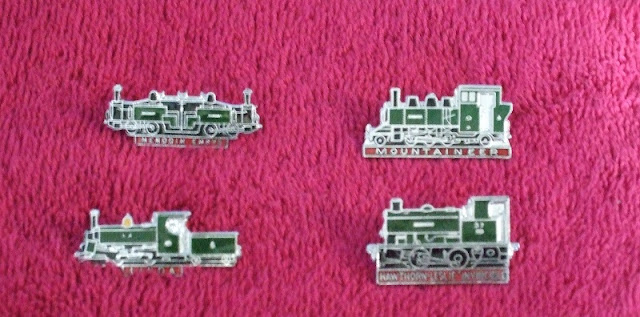 Locomotive Services Ltd (LSL), under their Statesman Rail trading name, will be running a brand new railtour on Saturday the 14th November 2020, featuring their Class 43 (High-Speed Train (HST). Statesman Rail is recreating a lost high-speed luxury train first launched in the 1960s, running between London St Pancras and Manchester Piccadilly. Hauling passengers on this fantastic tour will be LSL’s Class 43 HST set carrying the Nanking blue livery.
Locomotive Services Ltd (LSL), under their Statesman Rail trading name, will be running a brand new railtour on Saturday the 14th November 2020, featuring their Class 43 (High-Speed Train (HST). Statesman Rail is recreating a lost high-speed luxury train first launched in the 1960s, running between London St Pancras and Manchester Piccadilly. Hauling passengers on this fantastic tour will be LSL’s Class 43 HST set carrying the Nanking blue livery.Departing From
LONDON ST PANCRAS - ST ALBANS - LUTON - BEDFORD
* Due to the recent Government announcement that a short lockdown is about to be enforced from 5th November 2020, this service has unfortunately been postponed by the Tour Operator until 12th December 2020 *
The Midland Pullman was Britain’s first luxury high speed diesel-electric train running in the early 1960’s between Manchester Central and London St Pancras, offering the best possible at seat deluxe service and is remembered for the trains striking Nanking blue livery, white jacketed stewards, and impeccable customer service – To celebrate the 60th anniversary of this iconic train we are honoured to present our own refurbished high speed train as a faithful revival.
This inaugural train will offer a circular tour running between London St Pancras and Crewe following as closely as possible the original route to Leicester and along the Midland Main Line and the Erewash Valley. At Chesterfield we join the Hope Valley through the stunningly beautiful Derbyshire Peak District National Park offering amazing views of Mam Tor and Kinder Scout.
We continue through Stockport and rural Cheshire to Crewe and then travel across the Midlands via the Potteries, Stoke-on-Trent, Tamworth and Nuneaton to Leicester where we join the seldom used line through Rutland passing Melton Mowbray, Oakham, Corby and Kettering.
Blue Pullman, A brief history.
In July 1960 the Midland Pullman was relaunched as a luxury all-first-class service using two new Blue Pullman six-car diesel-electric units. The Blue Pullmans were luxury trains used from 1960 to 1973 by British Rail. They were the first Pullman diesel-electric multiple units, incorporating several novel features.
Named after their original Nanking blue livery, the trains were conceived under the 1955 Modernisation Plan to create luxury diesel express trains aimed at competing with the motor car and the emerging domestic air travel market. Although not entirely successful – they were seen as underpowered, and ultimately not economically viable – they demonstrated the possibility of fixed-formation multiple-unit inter-city train services, that a decade later was developed as the InterCity 125, which resembled them in having an integral power car at each end of the train.
The sets were an advanced and luxurious design, befitting a Pullman train, although they did suffer some criticism particularly over a persistent ride quality problem. Over time it became costly to maintain such a small fleet of trains. By 1972, with the development of first-class accommodation in Mark 2 coaching stock, the surcharge for Blue Pullmans seemed uneconomical and unreliable to passengers and BR managers, and in 1973 the trains were withdrawn. None of them were preserved .













